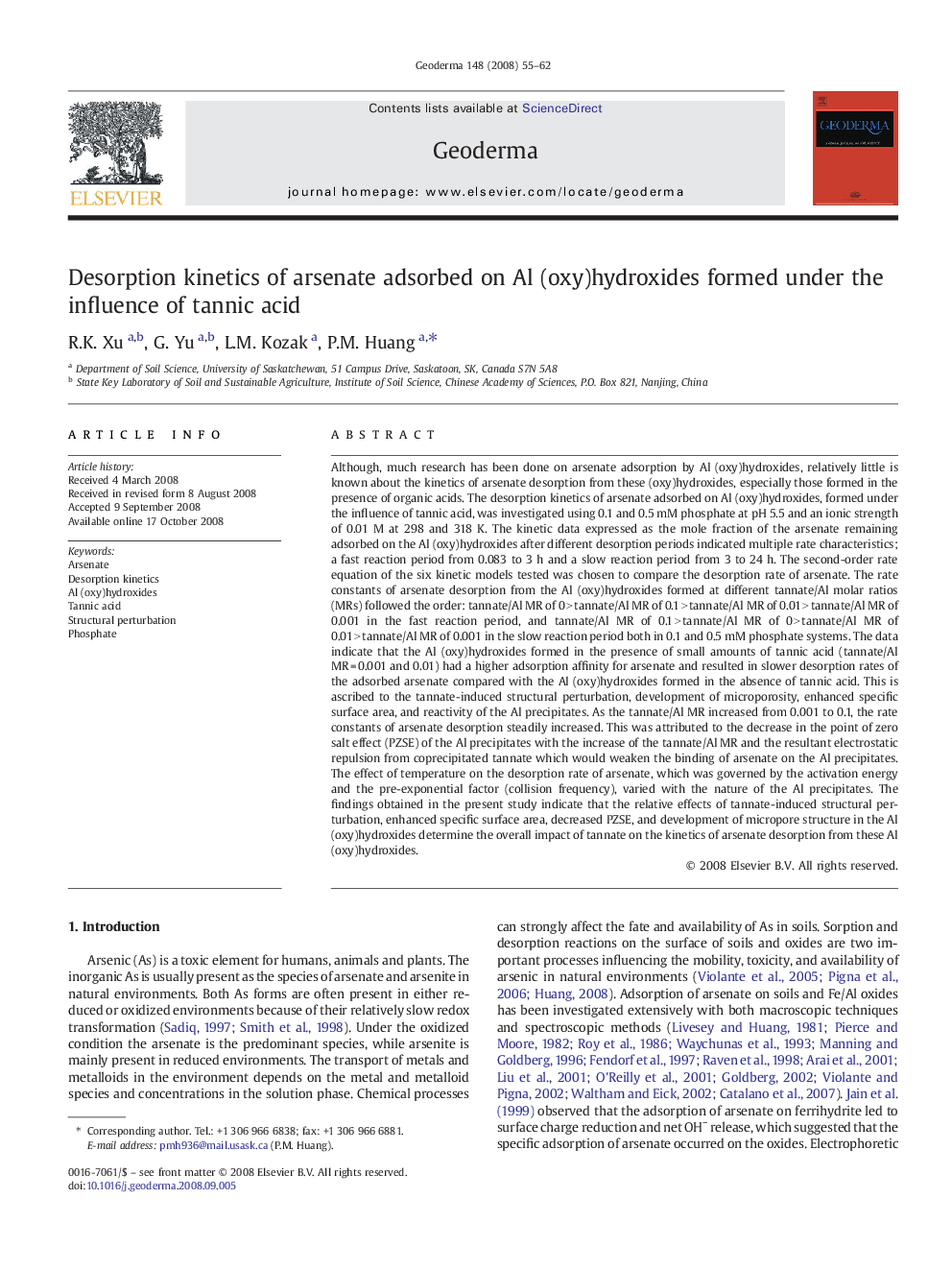| کد مقاله | کد نشریه | سال انتشار | مقاله انگلیسی | نسخه تمام متن |
|---|---|---|---|---|
| 4574782 | 1332503 | 2008 | 8 صفحه PDF | دانلود رایگان |

Although, much research has been done on arsenate adsorption by Al (oxy)hydroxides, relatively little is known about the kinetics of arsenate desorption from these (oxy)hydroxides, especially those formed in the presence of organic acids. The desorption kinetics of arsenate adsorbed on Al (oxy)hydroxides, formed under the influence of tannic acid, was investigated using 0.1 and 0.5 mM phosphate at pH 5.5 and an ionic strength of 0.01 M at 298 and 318 K. The kinetic data expressed as the mole fraction of the arsenate remaining adsorbed on the Al (oxy)hydroxides after different desorption periods indicated multiple rate characteristics; a fast reaction period from 0.083 to 3 h and a slow reaction period from 3 to 24 h. The second-order rate equation of the six kinetic models tested was chosen to compare the desorption rate of arsenate. The rate constants of arsenate desorption from the Al (oxy)hydroxides formed at different tannate/Al molar ratios (MRs) followed the order: tannate/Al MR of 0 > tannate/Al MR of 0.1 > tannate/Al MR of 0.01 > tannate/Al MR of 0.001 in the fast reaction period, and tannate/Al MR of 0.1 > tannate/Al MR of 0 > tannate/Al MR of 0.01 > tannate/Al MR of 0.001 in the slow reaction period both in 0.1 and 0.5 mM phosphate systems. The data indicate that the Al (oxy)hydroxides formed in the presence of small amounts of tannic acid (tannate/Al MR = 0.001 and 0.01) had a higher adsorption affinity for arsenate and resulted in slower desorption rates of the adsorbed arsenate compared with the Al (oxy)hydroxides formed in the absence of tannic acid. This is ascribed to the tannate-induced structural perturbation, development of microporosity, enhanced specific surface area, and reactivity of the Al precipitates. As the tannate/Al MR increased from 0.001 to 0.1, the rate constants of arsenate desorption steadily increased. This was attributed to the decrease in the point of zero salt effect (PZSE) of the Al precipitates with the increase of the tannate/Al MR and the resultant electrostatic repulsion from coprecipitated tannate which would weaken the binding of arsenate on the Al precipitates. The effect of temperature on the desorption rate of arsenate, which was governed by the activation energy and the pre-exponential factor (collision frequency), varied with the nature of the Al precipitates. The findings obtained in the present study indicate that the relative effects of tannate-induced structural perturbation, enhanced specific surface area, decreased PZSE, and development of micropore structure in the Al (oxy)hydroxides determine the overall impact of tannate on the kinetics of arsenate desorption from these Al (oxy)hydroxides.
Journal: Geoderma - Volume 148, Issue 1, 30 November 2008, Pages 55–62